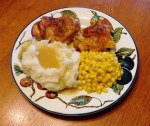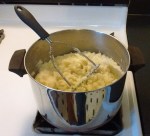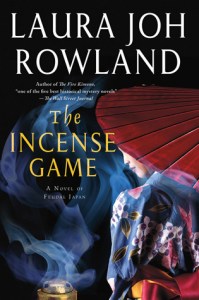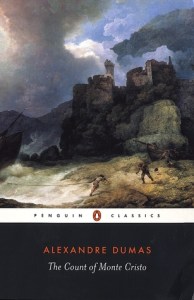 Several years ago while shelving AV material at the library where I used to work, I came across a CD titled The Goat Rodeo Sessions. What caught my eye, besides the unusual title, was Yo-Yo Ma on the cover. I was familiar with Yo-Yo Ma as a classically trained musician, but here he was featured on a CD devoted to music of a completely different genre. Without hesitation, I checked out the CD and couldn’t wait to listen to it on the drive home. What I heard started a love affair with a type of music I’d previously tiptoed around.
Several years ago while shelving AV material at the library where I used to work, I came across a CD titled The Goat Rodeo Sessions. What caught my eye, besides the unusual title, was Yo-Yo Ma on the cover. I was familiar with Yo-Yo Ma as a classically trained musician, but here he was featured on a CD devoted to music of a completely different genre. Without hesitation, I checked out the CD and couldn’t wait to listen to it on the drive home. What I heard started a love affair with a type of music I’d previously tiptoed around.
Probably what kept me from exploring this genre earlier was the fact that much of it was labeled Bluegrass. My opinion of Bluegrass included all things twangy and hick-i-fied. Yes, that is a word. What I discovered that day was something called Classical Crossover. Classical Crossover is a genre that hovers between classical and popular music, and is usually targeted at fans of both types of music. In the most common type of crossover, classically trained performers sing or play popular songs, folk music, show tunes, or holiday songs.
Chris Thile, Edgar Meyer, and Stuart Duncan also contributed to the CD’s eleven tracks of music based on English and Irish fiddle music that gave birth to what we know as Appalachian fiddle music. The closest I’d ever come to anything like it was the little bits of fiddle I’d heard in songs by Clannad and The Chieftains.
After listening to The Goat Rodeo Sessions, I went in search of other CDs by the same artists or those featuring similar music. I discovered Appalachian Waltz, Short Trip Home, Appalachian Journey, and Heartland: An Appalachian Anthology all of which are now in a playlist that became the soundtrack of my mind as I wrote my novel, The Secrets of Dr. John Welles. One song in particular, “Sliding Down” featuring Béla Fleck, Edgar Meyer, and Mike Marshall, epitomized John Welles’s experience in the later years of his life.
By the time John lived in the Appalachian Mountains of West Virginia, his life had taken so many downward turns that he believed he’d never dig himself out from under them. Yet through it all, he retained a shred of hope buried deep in his heart. “Sliding Down” is the musical representation of what John felt during those years: melancholy with a touch of optimism on the horizon that he was too afraid to reach for.
Other tracks from the above-listed CDs also played perfectly to the scenarios I wrote whether it was John as a boy on the family farm, as a student at the University of Maryland, during his relationship with the beautiful, enigmatic Garland, or the months following the D-Day Invasion. I don’t doubt that the music shaped what I wrote as if the songs were indeed a custom-made soundtrack. However, I finished writing over a year ago, so I haven’t accessed my Appalachian playlist in some time.
Last week, I had the opportunity to re-read To Kill a Mockingbird. It had been over thirty years since I had done so as an Honors English student in high school, but thanks to one of my book clubs, we revisited the classic. During one scene, Scout mentioned that Atticus liked listening to fiddle music on the radio. Suddenly my forgotten playlist rushed back to my memory. A quick check on Google confirmed that the Appalachian Mountains extend as far south as northern Alabama. As I read, all my favorite pieces became the background music for Scout, Jem, Dill, and Atticus’s adventures, and I listened to my playlist for two days straight.
By the way, the term goat rodeo refers to a chaotic event where many things must go right for the situation to work, a reference to the unusual and challenging aspects of blending classical and bluegrass music. Yo-Yo Ma described a goat rodeo saying, “If there were forks in the road and each time there was a fork the right decision was made then you get to a goat rodeo.” In the case of The Secrets of Dr. John Welles and To Kill a Mockingbird, the right choices weren’t always made, but somehow life worked out for the majority of those involved. This fact further reinforces my belief that the music of Appalachia is truly the music of real life.














